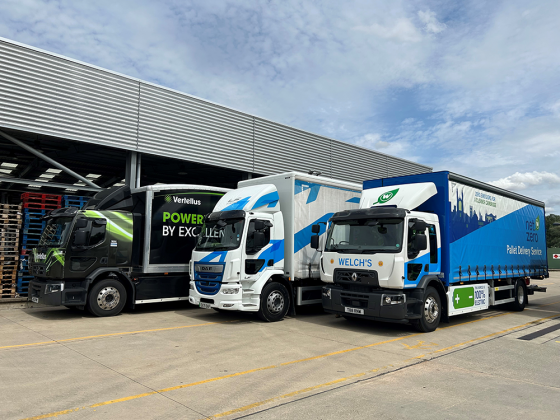The costs down the road
When choosing fleet vehicles, what factors should you bear in mind? While upfront costs are important, ACFO’s Julie Jenner argues that a long-term view of running costs is the best way forward
 The lower a vehicle’s carbon dioxide (CO2) emissions figure then the cheaper the total cost of ownership for employers and the lower the benefit-in-kind tax bill for employees.
The lower a vehicle’s carbon dioxide (CO2) emissions figure then the cheaper the total cost of ownership for employers and the lower the benefit-in-kind tax bill for employees.
That is the broad mantra that all organisations running company car fleets should have been following for the last decade – since the advent of CO2-based company car tax.
However, it is unfortunately true to say that many businesses still base their company car policies on a raft of alternatives to total cost of ownership calculations, such as list or on-the-road price, P11D value or monthly contract hire rate. But total cost of ownership figures – including taking account of funding costs, capital allowances, lease rental restrictions if contract hiring, and corporation tax, as well as fuel, service and maintenance costs, insurance, Vehicle Excise Duty and depreciation – is the only way for company bosses to get a true handle on what each individual vehicle costs to run.
For example, the on-the-road price of the BMW 114i ES three-door and the Ford Focus 1.6 TDCi 115 Edge five-door are within £5 of each other at £17,300 and £17,295 respectively. However, their mpg figures – 49.6 for the BMW and 67.3 for the Ford – and CO2 emissions (132g/km for the BMW and 109g/km for the Ford) give rise to totally different costs and that is without taking into account key total cost of ownership figures such as depreciation and service, maintenance and repair as well as corporate taxes.
Tax changes
Critically, taking the total cost of ownership route becomes even more important with the impact that Government changes to capital allowance and car lease rental restriction thresholds will have from April 1, 2013.
However fleets fund their vehicles – in the main that is outright purchase or contract hire – costs will typically increase as a result of the tax changes; although as a result of a quirk of the changes there are some exceptions: notably on cars with CO2 emissions between 110 and 130g/km where contract hire rates are not impacted by the changes and neither are capital allowances.
So, even though responsible fleets have been ‘going green’ for more than a decade to save themselves and their drivers cash and simultaneously meet Government calls to cut emissions, most of those same fleets will see their costs increase from April 1.
However, there are steps that public and private sector fleets can take to limit the impact of the forthcoming changes. But, first we’ll look at the changes that the Government is introducing on April 1, 2013.
In respect of organisations that buy their company cars the changes relate to capital allowances – the system that allows companies to offset the cost of items used for their business against their corporation tax bill – and specifically writing down allowance emission thresholds: the 100 per cent writing down allowance threshold for company cars is cut from 110g/km to 95g/km.
The 18 per cent writing down allowance threshold will apply to company cars with emissions of 96g/km to 130g/km. And the eight per cent capital writing down allowance threshold will apply to company cars with emissions above 131g/km.
Additionally, businesses that lease their vehicles will be impacted by a cut from 160g/km to 130g/km in the emission threshold at which the 15 per cent lease rental restriction applies.
And, in a further move, leasing companies will no longer be able to claim the 100 per cent first year allowance on cars with emissions up to 95g/km (110g/km in 2012/13).
The impact of the changes
That all sounds complicated, so typically what will the impact be? Outright purchase fleets will see no increase in their costs if they select vehicles with CO2 emissions of 95g/km and below. However, while vehicle choice in that sector of the market is limited, it is increasing rapidly.
Above that emissions threshold the change in writing down allowances will impact on company costs and cash flow, but businesses can minimise the impact by choosing sub-130g/km models – a sector of the market where choice is now plentiful.
Consequently, for outright purchase fleets the most significant impact of the tax changes on costs will be for businesses that continue to operate cars in the 131‑160g/km CO2 category as writing down allowances reduce from 18 per cent to eight per cent (above the 160g/km writing down allowances remain at eight per cent).
For businesses that lease their vehicles the most significant change is that the 15 per cent lease rental restriction will apply to cars above 130g/km (down from 160g/km). Therefore, lessees operating cars above that threshold will suffer a rise in costs due a reduction in the amount of tax relief available.
While fleets can calculate the impact of those changes on their costs, the unknown factor is what the impact on lease rates will be of the removal of the ability of contract hire companies to obtain full tax relief on their purchase of low emission cars (applicable on cars up to 110g/km in 2012/13).
Leasing companies will want to remain marketplace competitive, but the terms on which they borrow money and acquire vehicles vary from provider to provider and model to model. It is likely that the additional cost to leasing companies of buying cars will be reflected in monthly rental rates with sums of typically £5-£10 being talked about. In reality how leasing companies treat the additional cost to them will vary, but it is an issue that fleet decision-makers need to be aware of and factor in to their calculations.
Long-term view
Taking all of that into consideration it would be remiss of fleet decision-makers to focus too heavily on the impact of the April 1 corporate tax changes and negate their focus on other key cost factors such as depreciation, fuel and SMR costs.
Those costs make up a far larger proportion of a vehicle’s total cost of ownership and that is why it is critical to use whole life costs as the benchmark for company car choice lists.
Additionally, the start of the new financial year on April 6 will see company car drivers incurring a further rise in benefit-in-kind tax bills with a one percentage point increase for cars emitting more than 95g/km of CO2 up to a maximum of 35 per cent. That change will also trigger a rise in Class 1A National Insurance contributions for employers.
Meanwhile, in the past 12 months or more the seemingly daily rise in fuel prices has been one of the hottest topics in the news impacting hugely on all fleets and drivers.
Although prices at the pumps have reduced from the record levels seen last year, it is unlikely to last. Even without the impact of increases in the price of crude oil and distribution costs, the Chancellor of the Exchequer has signalled that there will be a duty increase on September 1.
It is against that background that fleet decision-makers must compile the most cost-effective company car choice lists and drivers must make their decisions, whilst always bearing in mind that vehicles must be fit-for-purpose.
Vehicle selection
New figures from the Society of Motor Manufacturers and Traders reveal that last year average new car CO2 emissions were at a record low of 133.1g/km – 22.7 per cent down on a decade ago.
Additionally, it should be remembered that while engineers have been cutting vehicle emissions they have also been able to improve fuel economy and increase performance from smaller engineers.
At face value it is easy to assume that in the pursuit of lower emission cars for tax and MPG reasons it would mean downsizing, but the reality is far from that.
Choice, via careful selection of sub-130g/km cars is plentiful and across numerous market sectors. For example, the BMW 520d is available with emissions of 119g/km and combined cycle fuel economy of 62.8mpg.
Meanwhile, Ford, the UK’s number one seller of cars, has recently introduced a 1.0-litre petrol engine in the Focus that delivers 115bhp, has emissions of 112g/km and returns fuel economy of 57mpg.
But, it would be wrong to single out any producer. Wherever you look, across manufacturers’ ranges there are models available that deliver incredible emission and MPG returns without any sacrifice in performance and there is more to come with, for example, Volkswagen promising a Golf with fuel economy of 88.3mpg and emissions of 85g/km in mid-year.
Of course, while core models within every organisation should be sub-130g/km there will be, at the margins in many fleets, reasons for employees to be driving higher emission models.
In other words, while 130g/km and below should be the rule for company car choice lists there will always be exceptions and nowhere is that likely to be more prevalent than among senior perk drivers and company directors.
Opt-out schemes
Some will undoubtedly take the low emission road, but others will want to still be at the wheel of their ‘gas-guzzler’. That may then provide businesses with the opportunity to look at the possibility of offering a cash opt out. Cash and employee car ownership scheme alternatives to company cars are already available in many businesses, but such options highlight numerous other idiosyncrasies that must be effectively and efficiently managed to prevent a perceived cost saving becoming a financial and administrative headache.
Finally, there remains much discussion around the fleet viability of electric vehicles. ACFO’s view has been consistent for many years and it is that such models are not financially or operationally viable except in a handful of niche circumstances.
In conclusion, the Government has laid out the tax rules and the motor manufacturers continue to respond with an ever‑increasing choice of low emission cars. Fleet decision‑makers that fail to react will see their costs rising at a rapidly escalating rate.
Further information
www.acfo.org






